Jonathan Gold’s 10 best dishes of the year
!["I worked almost a year for Joel Robuchon," Ludovic Lefebvre once moaned to a customer, "and that potato puree! So many hours rubbing those potatoes first through one tamis [horsehair sieve], then through another, then through another. My arms still ache." At Trois Mec, Lefebvre has taken revenge of sorts on his mentor with his own potato puree: slightly undercooked potatoes from farmer Alex Weiser passed through a ricer directly onto a plate of brown butter, long-cooked onion and Salers cheese from the Auvergne, then sprinkled with dried Japanese bonito flakes. The texture is not cloudlike but substantial; not just grainy but super-grainy. The onion sweetness, the funk of the cheese and the smokiness of the bonito not overpowering but enhancing the mildly acerbic sharpness of real potato flavor. If ever there was an anti-Robuchon potato dish, it is this one, constructed by a chef who knows the rules all too well -- mashed potatoes good enough to be served solo as a main dish. Read Jonathan Gold's review: Trois Mec is a coveted ticket to cutting edge](https://ca-times.brightspotcdn.com/dims4/default/43942b7/2147483647/strip/true/crop/2048x1365+0+0/resize/1440x960!/quality/75/?url=https%3A%2F%2Fcalifornia-times-brightspot.s3.amazonaws.com%2F7d%2F31%2F11e8e9b01d31a393e5317865ecad%2Flat-dishes-la0009822848-20130531)
“I worked almost a year for Joel Robuchon,” Ludovic Lefebvre once moaned to a customer, “and that potato puree! So many hours rubbing those potatoes first through one tamis [horsehair sieve], then through another, then through another. My arms still ache.” At Trois Mec, Lefebvre has taken revenge of sorts on his mentor with his own potato puree: slightly undercooked potatoes from farmer Alex Weiser passed through a ricer directly onto a plate of brown butter, long-cooked onion and Salers cheese from the Auvergne, then sprinkled with dried Japanese bonito flakes. The texture is not cloudlike but substantial; not just grainy but super-grainy. The onion sweetness, the funk of the cheese and the smokiness of the bonito not overpowering but enhancing the mildly acerbic sharpness of real potato flavor. If ever there was an anti-Robuchon potato dish, it is this one, constructed by a chef who knows the rules all too well -- mashed potatoes good enough to be served solo as a main dish.
Read Jonathan Gold’s review: Trois Mec is a coveted ticket to cutting edge (Anne Cusack / Los Angeles Times)
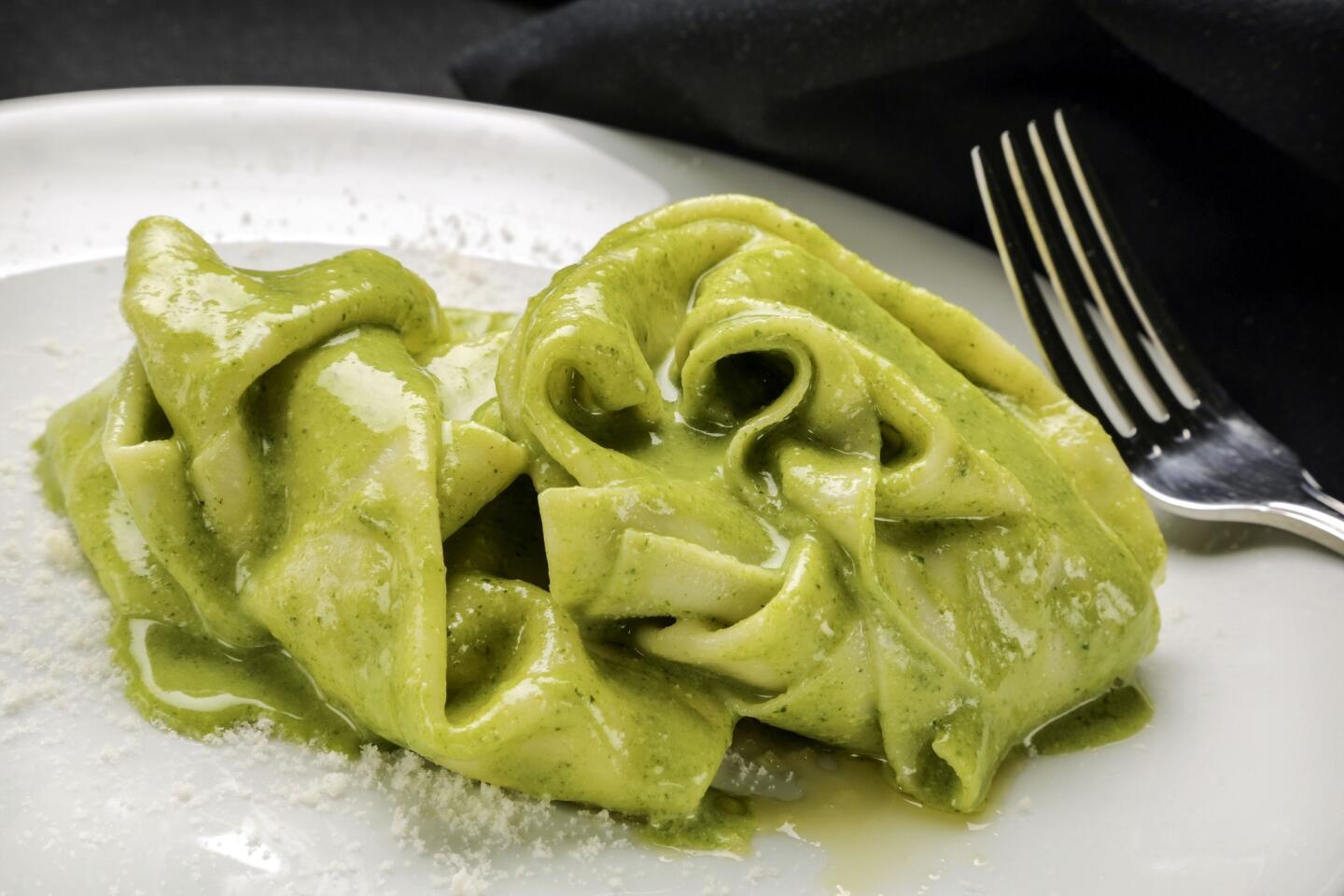
Mandilli, at least as prepared by Angelo Auriana at his new downtown restaurant, is a delicate handkerchief pasta, sheets thin as fine silk crumpled over a hand-mounted pesto thickened with almonds instead of pine nuts. These mandilli, almost too fragile to pick up with a fork, essentially melt into the fragrant basil the second they hit your tongue, leaving behind nothing but pleasant memories and perfume. Auriana, who was famous for his pasta during the 18 years he was chef at Valentino, has synthesized the flavors of his childhood visits to the Liguria region of Italy in a single dish.
Read Jonathan Gold’s review: Formal Italian meets friendly arts district at the Factory Kitchen (Ricardo DeAratanha / Los Angeles Times)
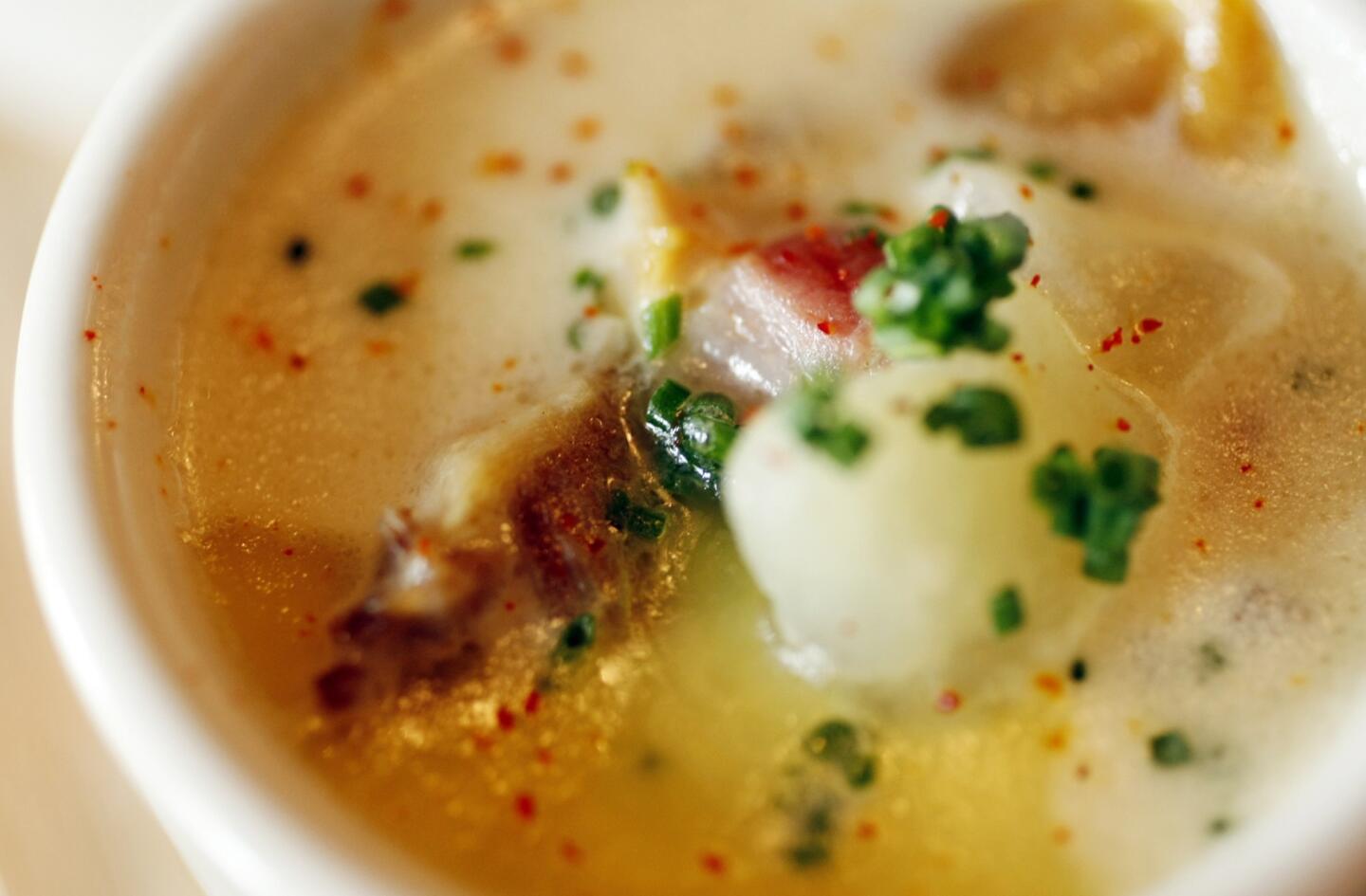
Michael Cimarusti, it is conceded, knows how to cook a fish. His seafood-intensive Providence is perhaps the finest restaurant in Los Angeles. And while any New Englander worth her salt pork has remarkably specific preferences about how lobster rolls, stuffies and clam chowder should be prepared, at Connie & Ted’s, a massive homage to Rhode Island shore dinners, Cimarusti has his own. So of the clam chowders on his menu, including one thickened with cream in the New England fashion and one spiked Manhattan-style with tomatoes, the one you want is the Rhode Island style, a clear, almost grayish, intensely clammy broth that tastes like a salty distillation of the sea. (As a bonus, it was also one of our 10 best recipes of the year, so you can make it at home.)
Read Jonathan Gold’s review: Connie and Ted’s, a clam shack extraordinaire (Al Seib / Los Angeles Times)
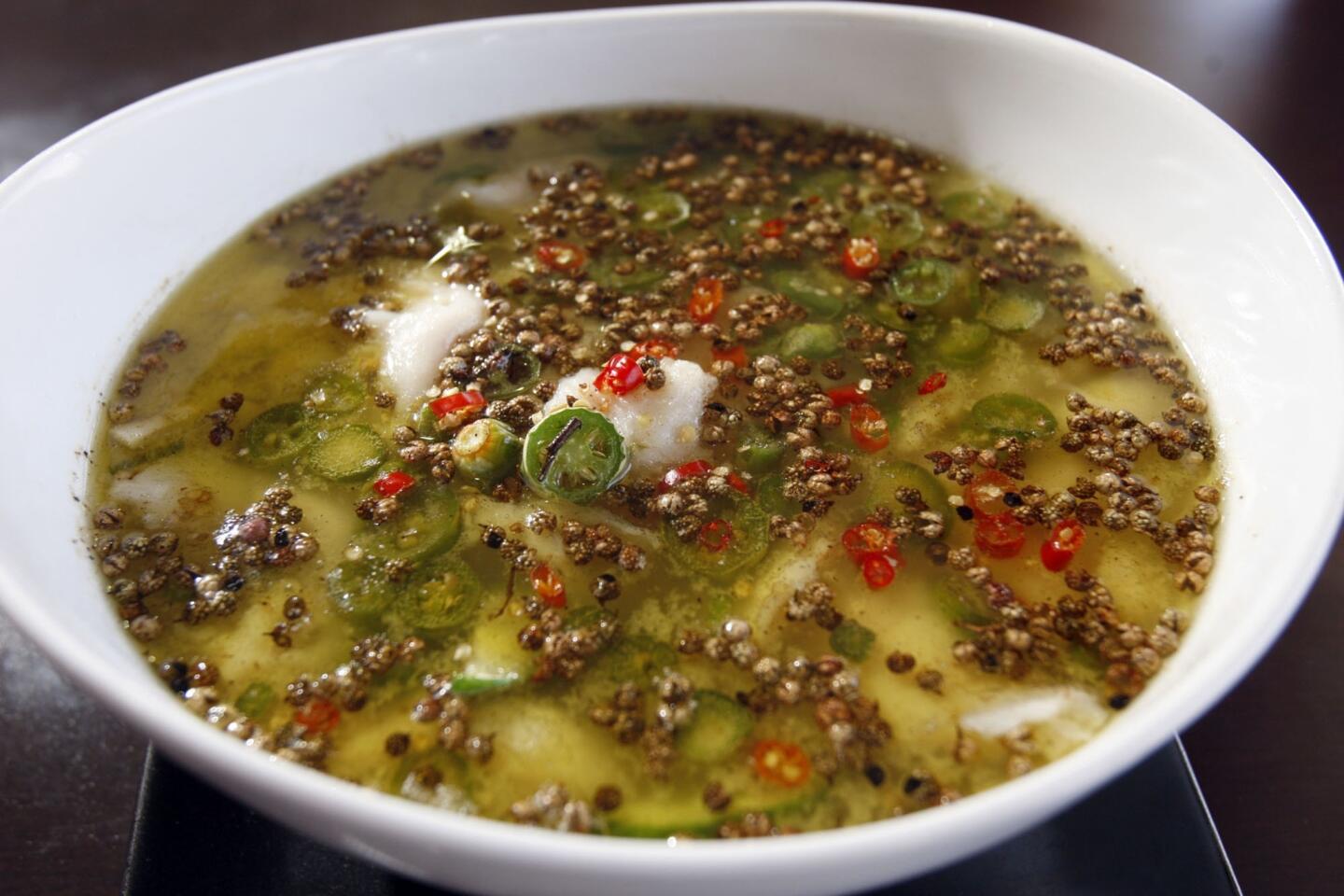
On weekend evenings, the wait for a table here can reach two or three hours. And the most compelling reason to linger outside on Valley Boulevard that long is this dish, a huge bowl of fillets poached in a broth whose upper inch includes sliced serrano chiles, a big handful of Sichuan peppercorns and lots of peppery oil. You’re not supposed to drink the broth, but the almost electric charge of the peppercorns brings out the sweetness of the fish, and the chile heat flits around your lips and tongue with the weird vibrancy of a flashing Las Vegas sign.
Read Jonathan Gold’s review: Chengdu Taste serves down-home Sichuan (Gary Friedman / Los Angeles Times)
Advertisement
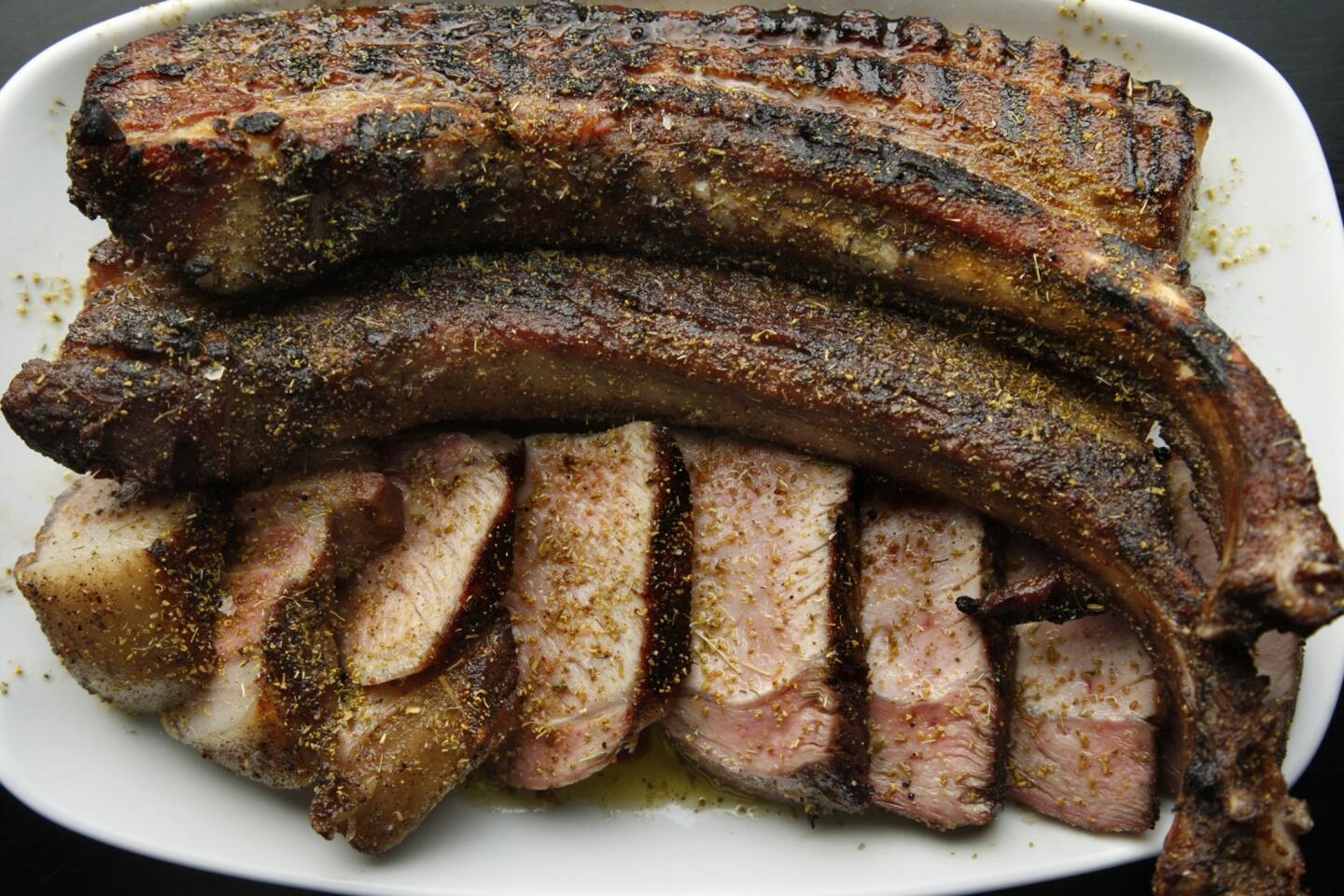
Chad Colby’s shrine to Italian meat in the ever-expanding Mozza-plex may have the most extensive salumi program in town and serve platters of razor clams, skewered amberjack and headcheese-stuffed frittatas, but its heart is in massive slabs of meat pulled sizzling off the grill. The most well-regarded of these is probably the fiorentina, a 42-ounce, $175 hunk of cow designed to feed four. But even better may be the “tomahawk” chop, a monumental cross-section of pork rib that actually dwarfs the fiorentina, rubbed with fennel pollen and grilled slowly until it becomes what great spareribs might be like if Alabama bordered on Umbria. (The usual disclosure applies here: Nancy Silverton, part owner of Chi Spacca, is a family friend.)
Read Jonathan Gold’s review: Chi Spacca is all about the meat (Gary Friedman / Los Angeles Times)
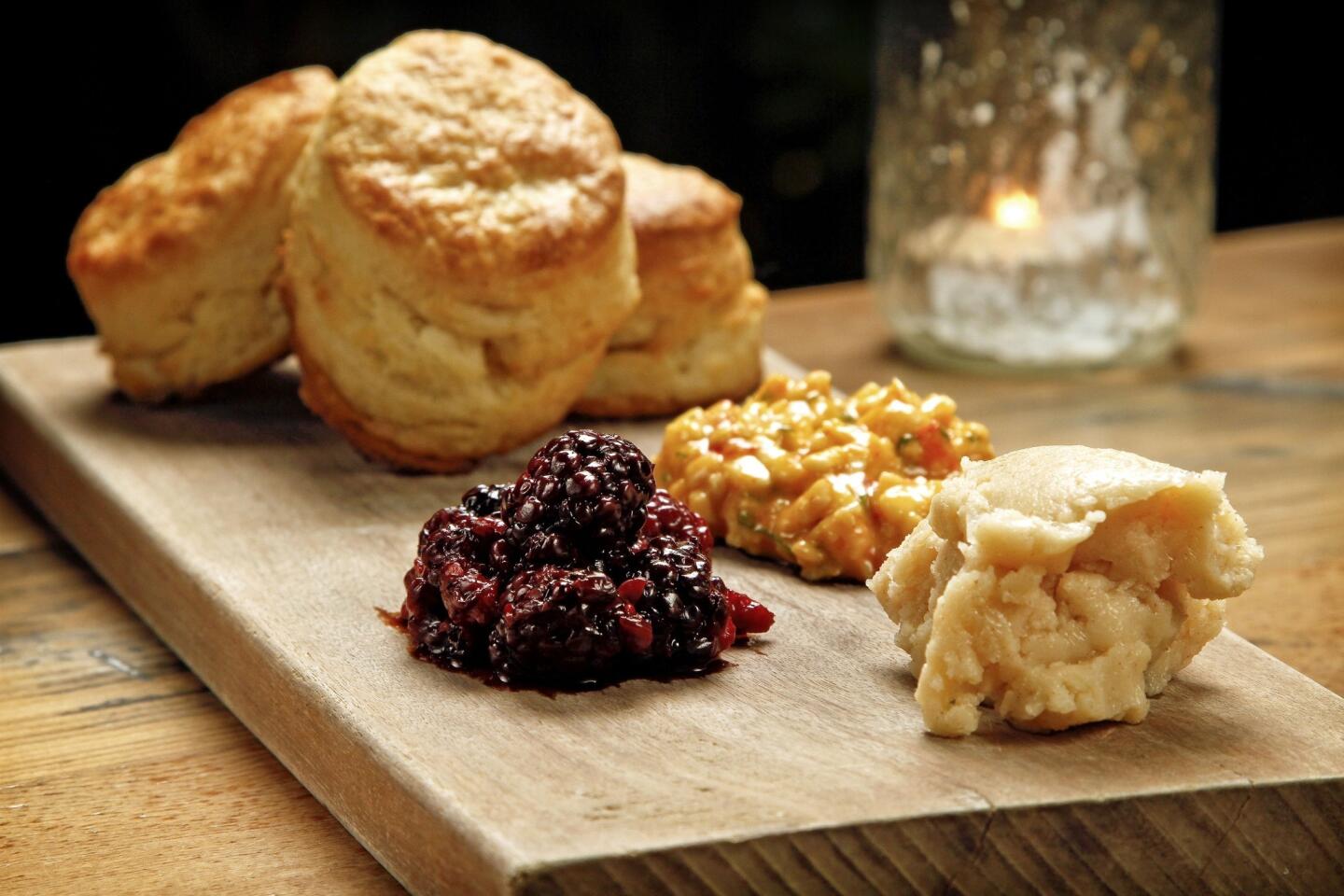
The first thing anybody is going to tell you about this place is that you should get the biscuits. And you should get the biscuits, which are really pretty extraordinary, as light and delicate as the angel biscuits you sometimes find in the best Southern households but also flaky at the extremities and layered: They naturally separate into two or three finger-burning strata, which you are going to need if you want to butter them properly. And when they come this scorchingly hot, on a plank that also holds a spoonful of pimento cheese, a smear of good butter and a few blackberries that taste as if they have just been plucked from a preserver’s pot, there is really nothing else you could want.
Read Jonathan Gold’s review: The Hart & the Hunter makes angelic biscuits (Ricardo DeAratanha / Los Angeles Times)
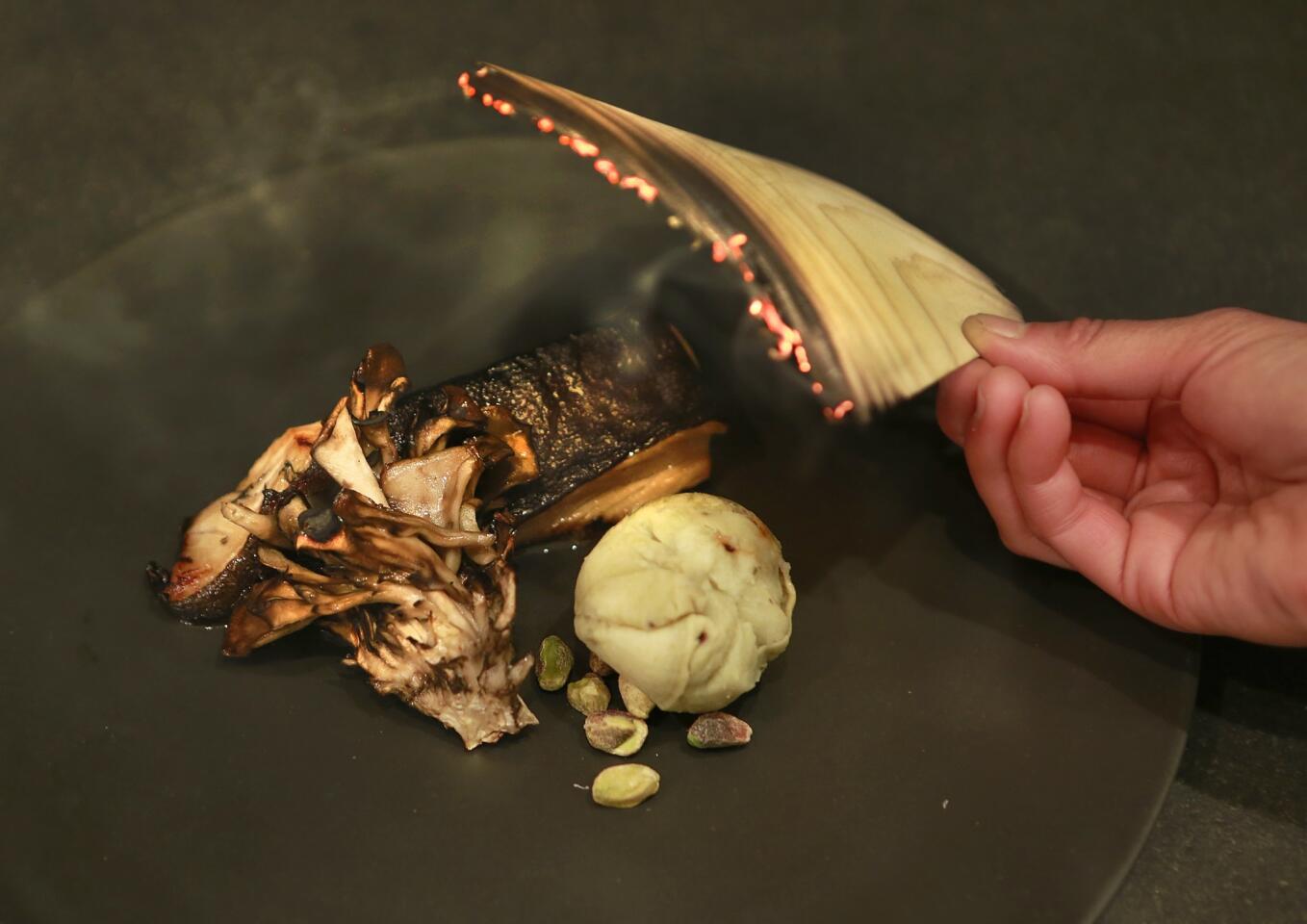
Hinoki is a fragrant cypress popular with wealthy Japanese because the wood is used to build the soaking tubs at hot springs. At Hinoki and the Bird, his kaiseki-tinged small-plates lair beneath a sleek Century City skyscraper, David Myers ignites paper-thin sheets of hinoki and lays them, still smoldering, over charred clumps of oyster mushrooms and crisp-skinned hunks of black cod. The wood perfumes the restaurant -- you can always tell when somebody across the room has ordered it -- and touches the fish with the scent of a distant bonfire.
Read Jonathan Gold’s review: Stylish, deluxe Japan-inspired cuisine at Hinoki & the Bird (Allen J. Schaben / Los Angeles Times)
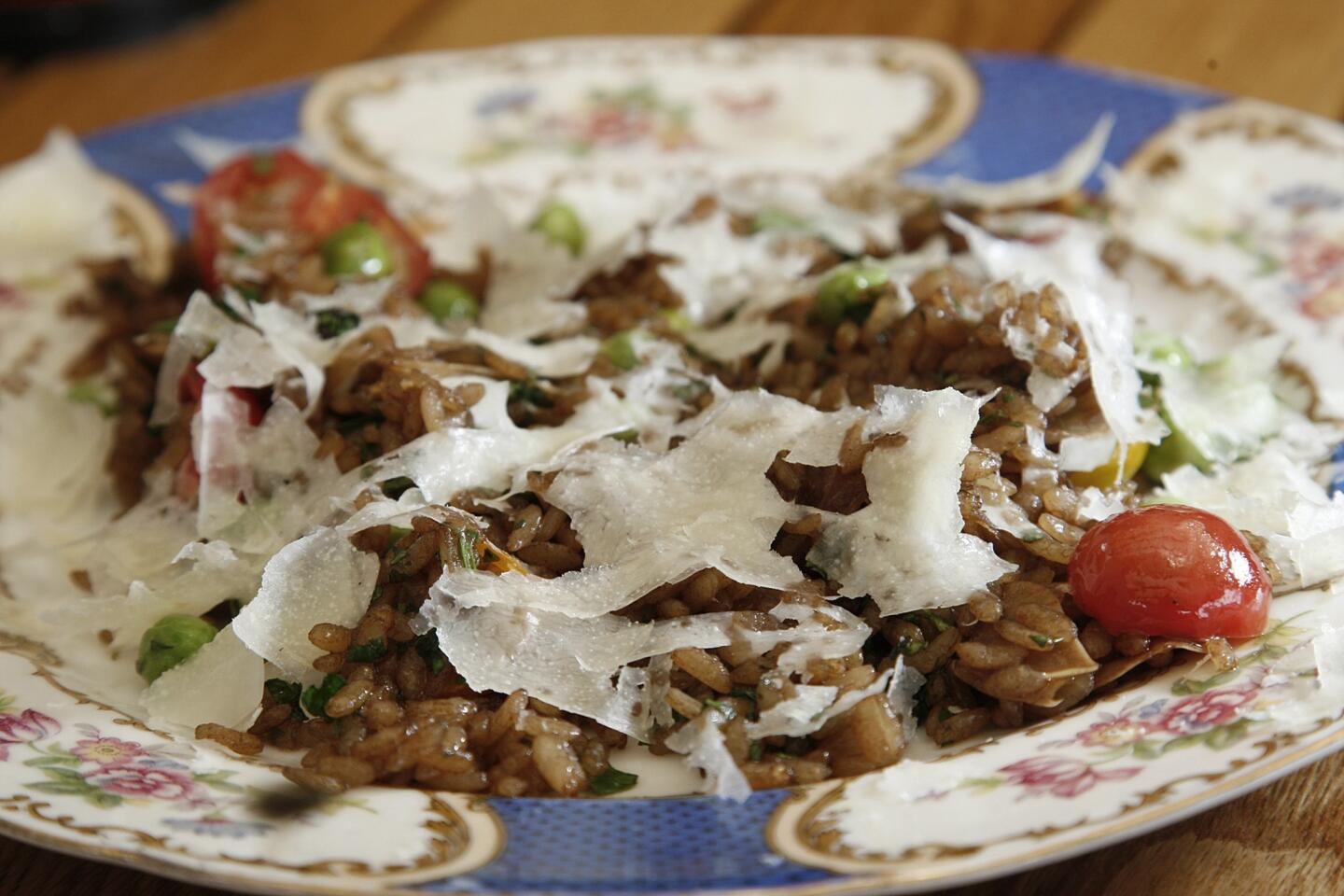
Some of the greatest of the world’s dishes arise out of necessity, like bouilliabaisse from French fishermen’s excess of bony fish or Vietnamese com tam from a merchant’s surplus of broken rice. Risotto alla pilota, rice-miller’s risotto, has similar origins, one suspects, a dish from northern Italian rice country of crunchy, chewy fried rice flavored with dried tomatoes and sharp pecorino cheese. The menu at Jesse Barber’s Barnyard, one of those Westside places connected by umbilical cord to the Santa Monica farmers market, seems to change almost by the hour, but you can usually count on finding risotto alla pilota on the menu.
Read Jonathan Gold’s review: Barnyard’s deceptive simplicity (Gary Friedman / Los Angeles Times)
Advertisement
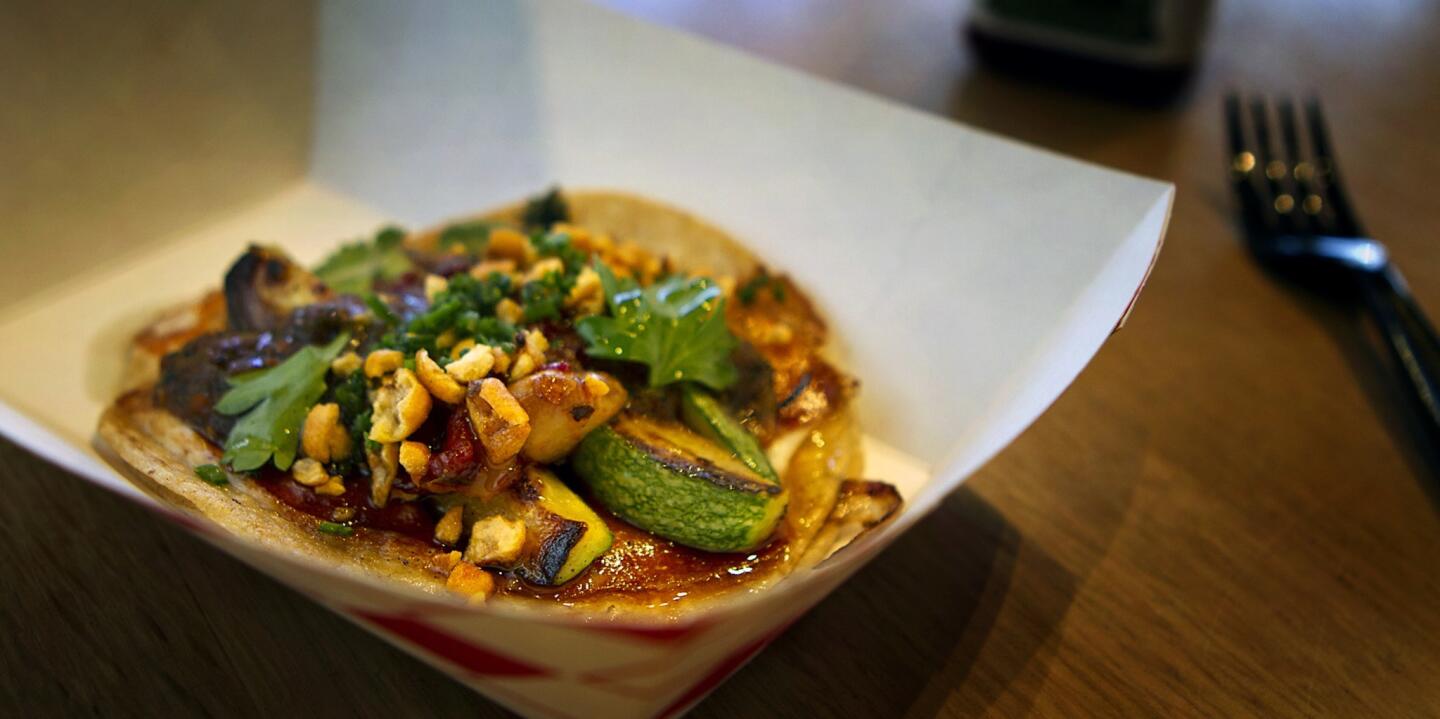
Is it possible for a taco to become haute cuisine? Wes Avila’s Guerrilla Tacos now occupies a truck instead of a street cart, and it now parks outside Cognoscenti Coffee in Culver City a couple of days a week in addition to its three per week outside Handsome Coffee Roasters deep downtown, but if anybody is likely to answer that question, it is him. Avila is the rare taquero who has worked with chefs like Walter Manzke, Gary Menes and Alain Ducasse. So the tacos you get at Guerrilla are pretty much the ones he decides to sell you, which are as likely to be stuffed with diver scallops or Tuscan kale as they are to be heaped with carnitas. The tacos made with roasted squash and seared Oaxacan cheese do tend to turn up a lot, though, and for good reason. Find the current schedule at guerrillatacos.com. (Cheryl A. Guerrero / Los Angeles Times)







